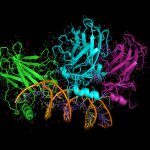Link to Pubmed [PMID] – 16221076
Expert Rev Vaccines 2005 Oct; 4(5): 757-78
Whooping cough remains an endemic disease, and the re-emergence of pertussis in older children and adolescents has been reported in several countries, despite high vaccine coverage. Polymorphism of Bordetella pertussis has been observed over time, and some characteristics of pertussis isolates have gradually diverged from the vaccine strains. The present review summarizes the current knowledge on B. pertussis variability in countries with different vaccination programs and discusses its potential impact on the recently observed increased incidence of whooping cough. No direct association between B. pertussis isolate variability and vaccination programs has been observed to date, except for shifts from fimbriae Fim2 to Fim3. More likely explanations for the re-emergence of pertussis include the change in the epidemiology and transmission patterns of pertussis in highly vaccinated populations, and a shift of disease from young children to adolescents and adults due to waning protective immunity.


